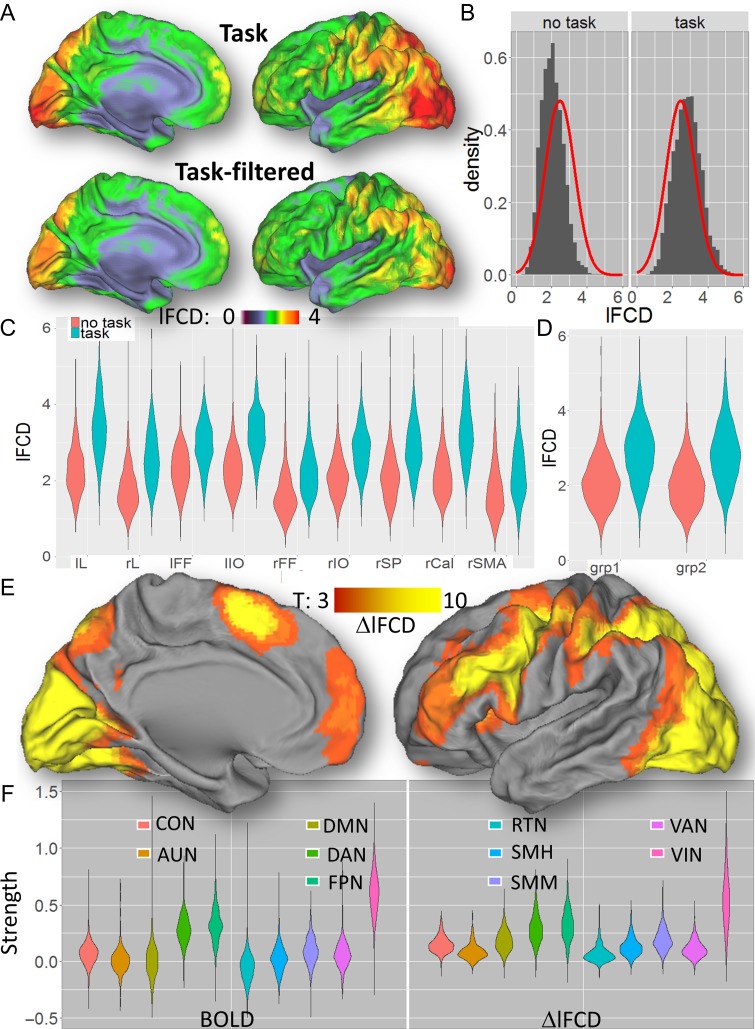Figure 4.
Effects of the relational task on lFCD. (A) Average lFCD distributions across 426 subjects for the Relational task, with (task) and without (task-filtered) TSR, superimposed on medial and lateral views of the left cortical hemisphere of the PALS-B12 atlas of the cerebral cortex. (B) Probability distributions of lFCD across subjects without (task) and with (task-filtered) TSR, averaged across ROIs (gray histograms) and the normal distributions (red curves) corresponding to their average. Violin plots showing the average lFCD for each ROI (C) and group (D) with and without TSR. (E) Statistical significance of task-related changes in lFCD (i.e., from “task” to “task-filtered” conditions), ΔlFCD, across 426 subjects for the Relational task. (F) Violin plot showing the average BOLD and ΔlFCD for each functional network. Anatomical parcels: lL and rL: left and right lingual gyri; lIO and rIO: left and right inferior occipital gyri; lFF and rFF: left and right fusiform gyri; rSP: right superior parietal cortex; rSMA: right supplementary motor area; and rCal: right pericalcarine cortex. Functional networks: cingulum-operculum (CON), auditory (AUN), default-mode (DMN), dorsal (DAN) and ventral (VAN) attention, visual (VIN), hand (SMH) and mouth (SMM) sensorimotor, frontoparietal (FPN), and retrosplenial-temporal (RTN).

